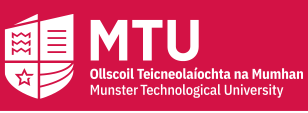ORCID
0000-0002-8822-7167
Abstract
The use of nature-based solutions (NbS) to address the risks posed by hydro-meteorological hazards have not yet become part of the mainstream policy response, and one of the main reasons cited for this, is the lack of evidence that they can effectively reduce disaster risk. This paper addresses this issue, by providing model-based evidence from five European case studies which demonstrate the effectiveness of five different NbS in reducing the magnitude of the hazard and thus risk, in present-day and possible future climates. In OAL-Austria, the hazard is a deep-seated landslide, and the NbS analysed is afforestation. Modelling results show that in today's climate and a landcover scenario of mature forest, a reduction in landslide velocity of 27.6 % could be achieved. In OAL-Germany, the hazard is river flooding and the NbS analysed is managed grazing with removal of woody vegetation. Modelling results show that the NbS could potentially reduce maximum flood water depth in the near-future (2031–2060) and far-future (2070–2099), by 0.036 m and 0.155 m, respectively. In OAL-Greece, the hazard is river flooding, and the NbS is upscaled natural storage reservoirs. Modelling results show that in a possible future climate the upscaled NbS show most potential in reducing the total flooded area by up to 1.26 km2. In OAL-Ireland, the hazard is surface and river flooding, and the NbS is green roofs. Results from a modelled upscaling analysis under two different climate scenarios show that both maximum flood water depth, and total flooded area were able to be reduced. In OAL-UK, the hazard is shallow landslides, and the NbS is high-density planting of two different tree species. Modelling results under two different climate scenarios show that both tree species were able to improve slope stability, and that this increased over time as the NbS matured. The significance of these results is discussed within the context of the performance of the NbS over time, to different magnitude events, impact with stakeholders in engendering wider support for the adoption of the NbS in the OALs, and the uncertainty in the modelling analyses.
Disciplines
Civil and Environmental Engineering
DOI
10.1016/j.nbsj.2024.100127
Full Publication Date
2024
Publisher
Elsevier
Funder Name 1
European Commission
Award Number 1
776848
Resource Type
journal article
Resource Version
http://purl.org/coar/version/c_970fb48d4fbd8a85
Access Rights
open access
Open Access Route
Gold Open Access
License Condition

This work is licensed under a Creative Commons Attribution 4.0 International License.
Alternative Identifier
https://www.sciencedirect.com/science/article/pii/S2772411524000181?via%3Dihub#refdata001
Recommended Citation
Bowyer, P., Alfieri, S.M., Basu, B., Cremin, E., Debele, S., Kumar, P., Lechner, V., Loupis, M., Menenti, M., Mickovski, S., Gonzalez-Ollauri, A., Pfeiffer, J., Pilla, F., Pulvirenti, B., Ruggieri, P., Basu, A.S., Spyrou, C., Unguendoli, S., Zieher, T. and di Sabatino, S. (2024). Modelled effectiveness of NbS in reducing disaster risk: evidence from the OPERANDUM project. Nature-based solutions, [online] 5, pp.100127–100127. doi:https://doi.org/10.1016/j.nbsj.2024.100127.


Publication Details
Nature-Based Solutions